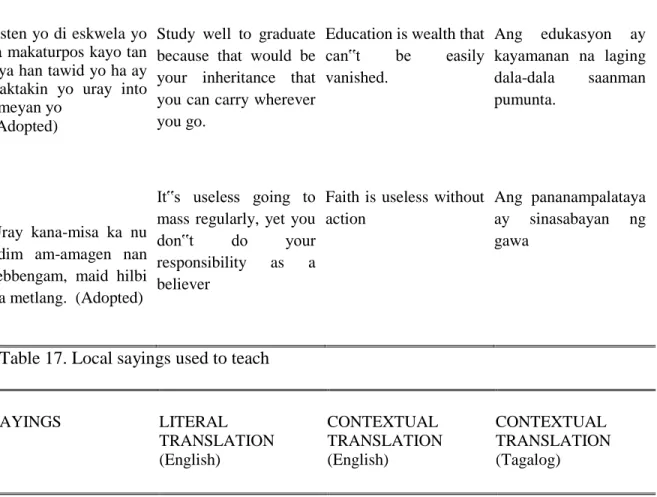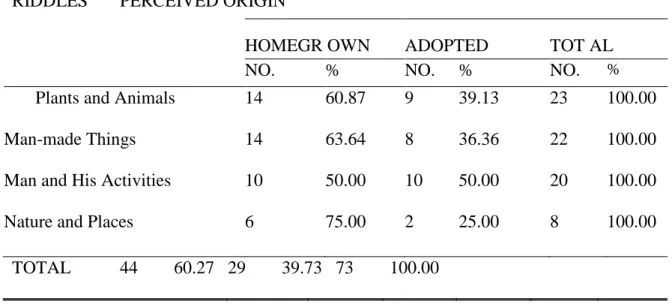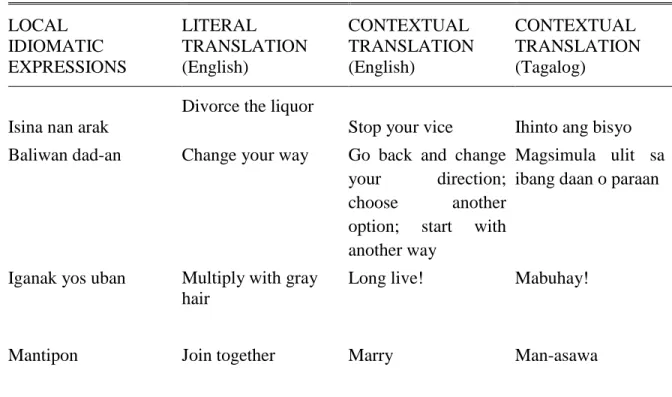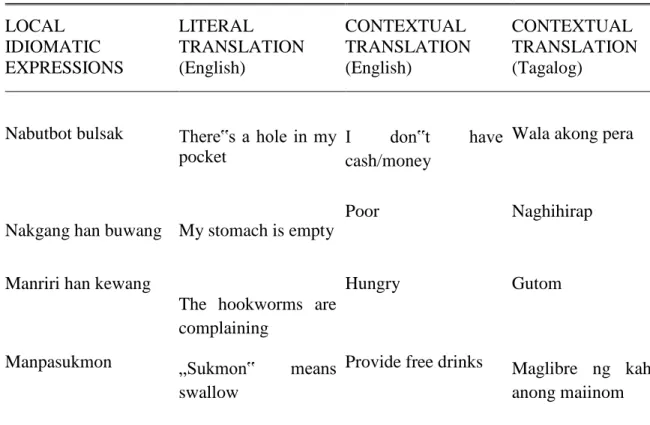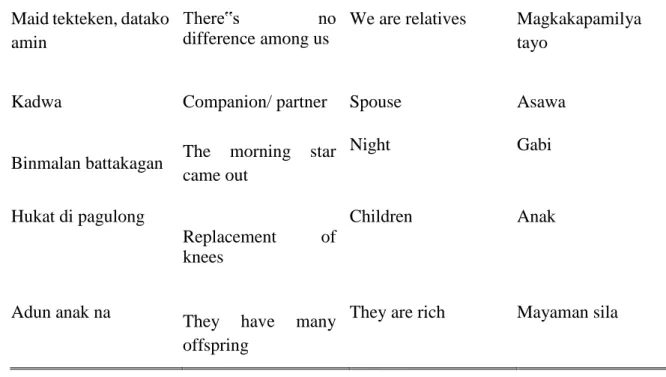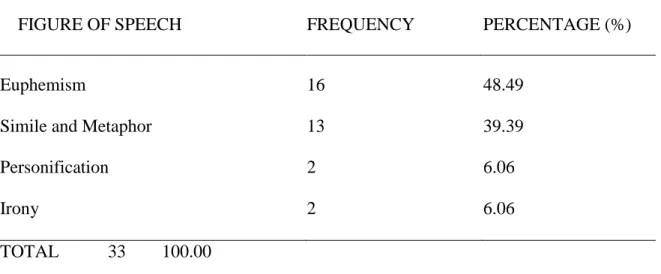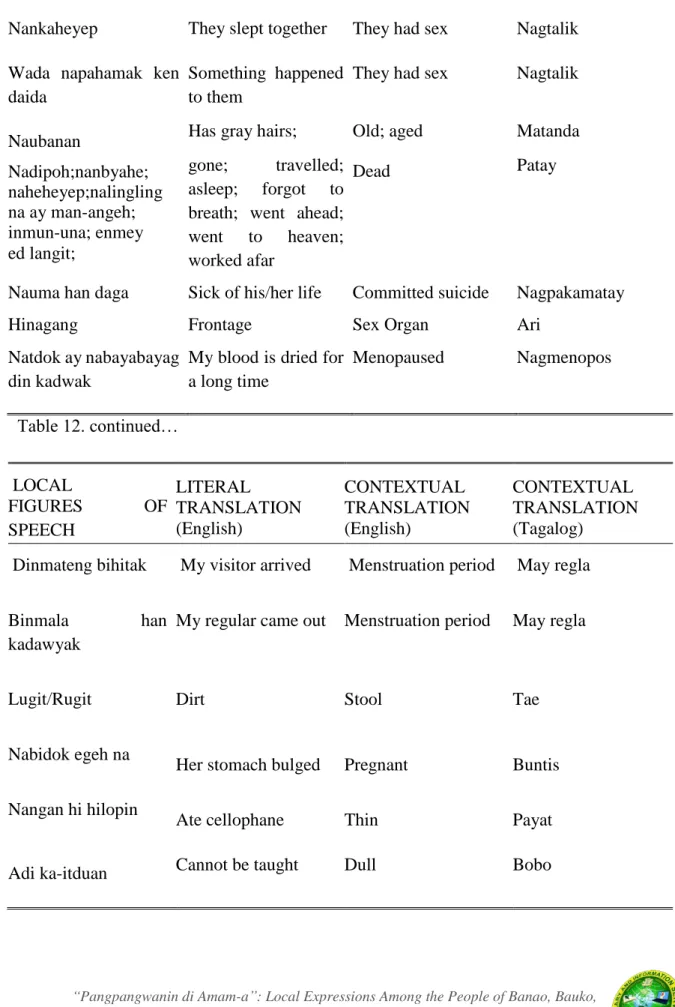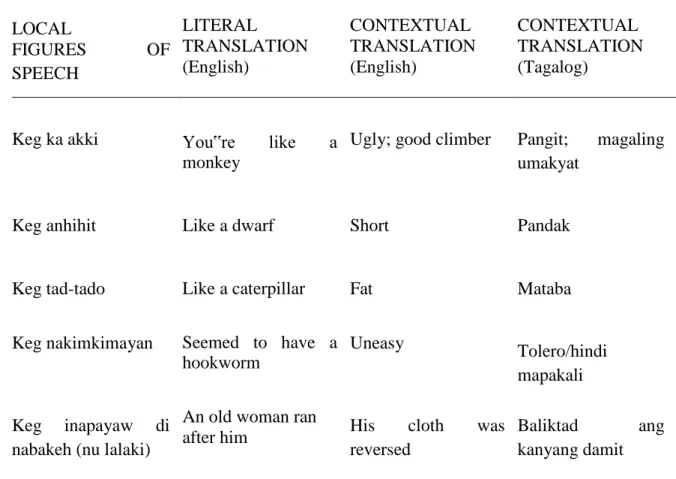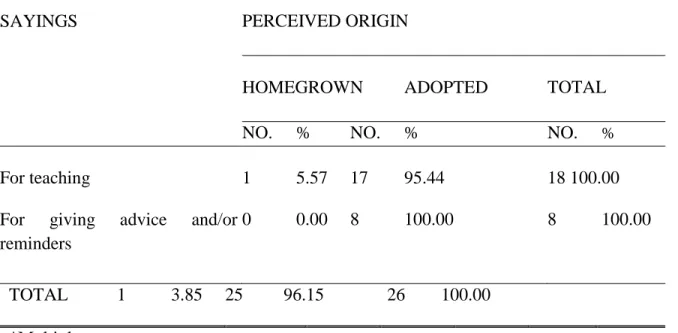From the results of the study, the following conclusions were drawn: the people of Banao still had a variety of local expressions to convey their messages in different situations or cases; local expressions had similarities with expressions in the English language in the sense that they can also be classified into idiomatic expressions and the like; community gatherings or activities served as places for the preservation of local expressions because these were the instances when they were used or shared with others. It forms part of the indigenous knowledge of the people that has been passed down from generation to generation. Even families in rural areas now speak to their children in Filipino and English, or in the „lingua franca‟ of the region that is Mount Iloko, endangering the survival of local languages, including these local expressions.
The results of the study can be used by teachers, researchers, extension workers and local children as a reference in teaching or learning local expressions. The study was limited to collecting local expressions, translating the contextual meanings into English and Tagalog, identifying their origin, describing the situations or occasions when they are used and classifying them based on the defined characteristics of linguistic expressions. The origin of the collected expressions and the situations when they are used were perceived by the respondents.
Saway (1998), on the other hand, said that IK is defined in a holistic concept that encompasses the social, economic, political and spiritual life of a community. IKS in relation to the sustainable management and use of biological resources in the environment has not yet been thoroughly explored in accordance with a holistic understanding of the indigenous structures and institutions of the cultures, traditions, beliefs and practices of the tribe. Meanwhile, Florendo (2001) explained that the use of oral histories and narratives ensures that the voices of people from grassroots communities are heard.
According to Georges and Dundes (1963) as cited by Hamnett (1997) riddle is a traditional verbal expression which contains one or more descriptive elements where a pair may be in opposition and the reference of the elements must be guessed. Nordquist (2012) added four meanings of the figures of speech specifically in literature: it creates a picture in front of the mind, it contributes to clarity, they are used to illustrate a subject, thus gaining a clarity that could not be provided in any other way and finally they add persuasiveness of style, which means that they give it variety by enabling the writer to change his form of expression at will. She further elaborated that it is through translation that we know about all developments in communication and technology and keep up to date with the latest discoveries in the various fields.
Mistranslating the word or meaning can be offensive, and some literal translations are not always correct. Banao is one of the oldest barangays of Bauko, a municipality that was formally established in 1911. The expressions can be used among the people of the community, but they can be demeaning to the specific persons, especially because these expressions convey negative attitudes or characteristics involve.
Expressions classified as homegrown are expressions that have any of the following characteristics: related to the cultural practice/activities of Banao people; non-obvious translations of utterances from other places (based on the researcher's perception/knowledge); originally compiled by the respondent; or heard from the indigenous people in the same place. Some riddles play with the words to add rhyme, like the first one in Table 5. Akuntiyap' and 'Akuntibong' are not regular words, but they are used in the riddle to make it sound fun. One of the respondents mentioned that local idiomatic expressions and figures of speech are rarely used or they emerge naturally when necessary or necessary for a particular situation.
Kas pagarigan, ti "maag isuna" wenno "adda napasamak kadakuada" ket naus-usar a kas euphemismo imbes a ti bulgar nga ebkas nga "mag isuna".
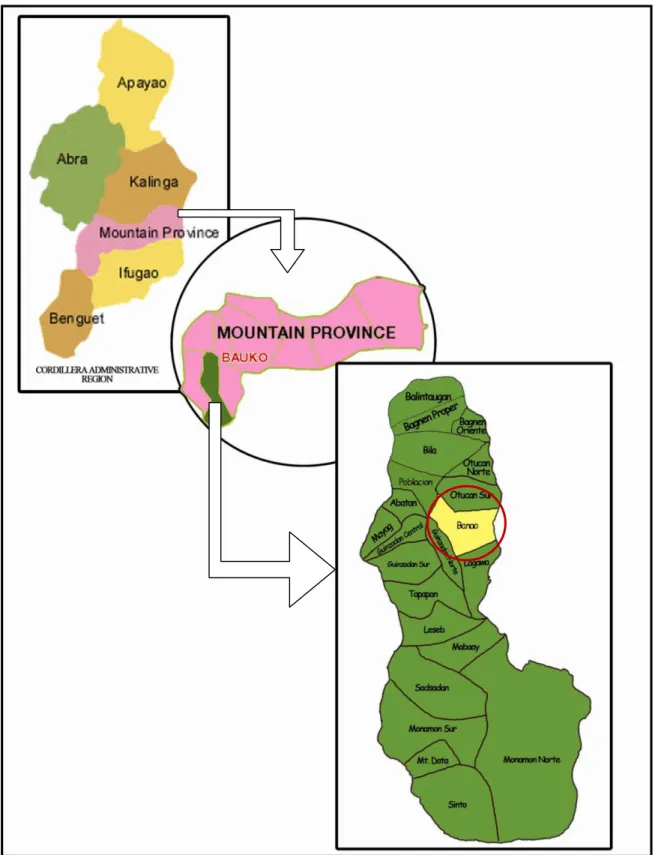
Adi tan siyat mankapitan asi tumulal si ili' was mentioned by one of the interviewees as his father's own motto, which he used to teach his children to be helpful. Its purpose was to collect local expressions used by the people of Banao, Bauko, Mountain Province, classify them, translate them into English and Tagalog, determine their origin as perceived by the respondents and describe the situations in which they are used. Local riddles were further classified into four according to their answers; local idiomatic expressions, in three according to the situations in which they are used; the local figures of speech in four, according to the given types of figures of speech in English, such as simile, metaphor, irony, personification and euphemism; and the proverbs in two, based on the situations in which they are used.
In circumstances such as waking up, riddles are used to entertain people especially at night so that they will not sleep. Idiomatic expressions are used when there is a need to give an advice, to insinuate and many other circumstances such as greeting, to express anxious uncertainty, to describe a status in life and to express relationships. Figures of speech are used to be polite, to be impolite, to compare and to give human characteristics to inanimate objects.
The people of Banao, Bauko still have a variety of local expressions to convey their messages in different situations. Local expressions have similarities with expressions in the English language in the sense that they can also be classified into idiomatic expressions and the like. Community gatherings or activities serve as places for the preservation of local expressions because these are the instances when they are used or shared with others.
Results of this study are recommended to be stored or published in a permanent material that can be used by teachers, researchers, guidance counselors and the locality's children as a reference in teaching or learning local expressions. Communities should be encouraged to hold activities/gatherings where the local expressions can be used or shared. Retrieved September 4, 2012, from http://www.linguarama.com/ps/technology-themed-english/what-is-anidiom.html.
Towards Understanding Peoples of the Cordillera: A Review of Research on History, Governance, Resources, Institutions and Living Traditions.
